
The school year began with a simple question: what do we care about?
Identifying a Local Issue
Among the 1,300 students at Munich International School, eight students chose to take a Changemakers elective class. To identify what these Grade 8 students felt were the most important issues, we used the United Nations Sustainability Development Goals (UNSDG) Common Interest Building Training Game(1) to help us. Collectively, we decided our most important goals: Sustainable Cities and Communities, Climate Action, and Peace, Justice and Strong Institutions. From there we dove into observations and research on how our local area may relate to these three Sustainable Development Goals.
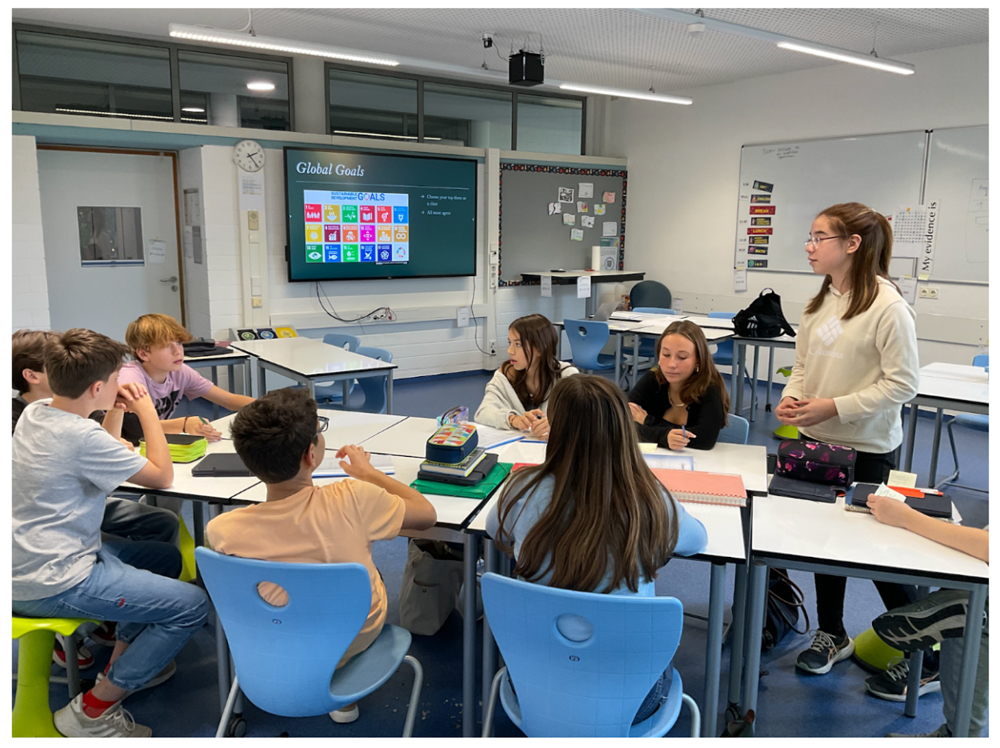
“The bus stop is chaotic!”- Charlotte
“At the start of the year I was riding the bus and noticed that the bus driver was annoyed so I knew we had to do something.” - Mark
These were just a few of the students’ insights, closely aligned with the goal of Sustainable Cities. Students observed that the public afterschool bus, which runs through our school, often arrives late, or sometimes doesn’t show up at all. Not only that, but we have more than 100 students relying each day on the 904 bus and the bus only has capacity for 80. Despite the presence of extra duty teachers in this area: overcrowding, panic, and the risk of accidents persists each day, particularly to our younger students.
“I was in charge of the survey, 46 students participated. In response to the question about ideas for improvements to make the 904 bus more peaceful, they came up with the ideas to make the lines straighter, backpacks tucked under feet and that a second bus after school was needed since there was not enough space.” – Jonathan
We dug deeper. To investigate what contributes to peace and justice at a bus stop, the students interviewed stakeholders: principals, transportation authorities (both within our school and locally), security guards, students, and of course, bus drivers.
Deniz, our chief media researcher, learned from CarbonIndependent.Org that “The CO2 emissions would go up 15 times if everybody on a bus has their own car.” And from the Starnberg’s annual budget, “Somewhere between 2-8% of the city’s budget is spent on transportation (10 million Euros).” Through research in the forms of media, interviews, a survey, and more observations, students were motivated yet unsure whether they could create a more peaceful, safe, and sustainable bus service for our students.
Defining Our Action
We turned next to Systems Thinking Tools which would help us identify our leverage point. The Sustainability Compass and Sustainability Iceberg were anchors for what lay ahead.
“For me the Iceberg Model and sustainability compass were very useful tools because it helped me break down the problem into chunks, so that I could then take action to solve parts of the problem which then solves the big problem.” – Mete
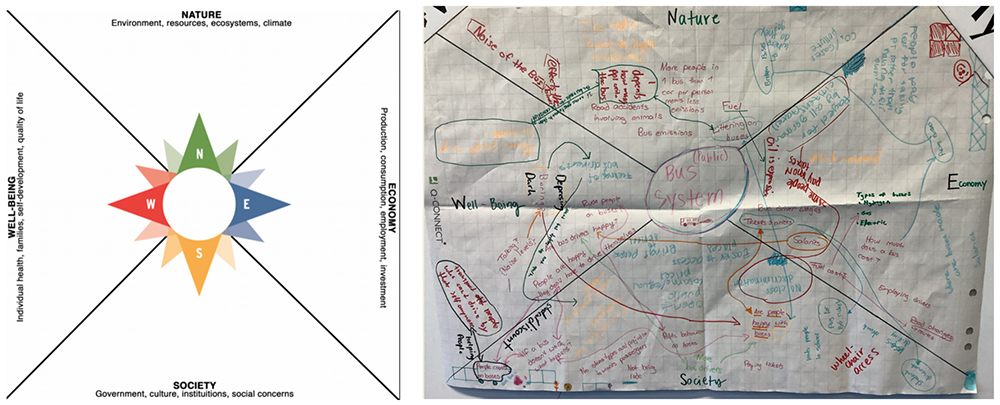
(From left to right) Sustainability Compass and student work. (Photo source: AtKisson Group and Kathryn T. Berkman)
While drawing arrows between what students had written in all four parts of the Sustainability Compass (N:Nature, E:Economy, S:Society, and W:Wellbeing) the students saw that the major leverage point was the wellbeing of bus drivers. The Sustainability Iceberg allowed us to articulate how we could address the issue at different levels: Events, Patterns, Systems, or Mental Models. These systems thinking tools allowed the class to conclude that the reason for an unreliable and an unsafe bus service was because of the mental models and belief systems our community had towards bus drivers. If bus drivers did not feel appreciated, they were less likely to come to work, causing more stress for students to push on to the only bus coming that hour.
Our action took shape: change the mindsets of our community to see the value bus drivers bring to our community. And while we are at it, let’s try to change the system so that two public buses come after school, relieving the tension for all.
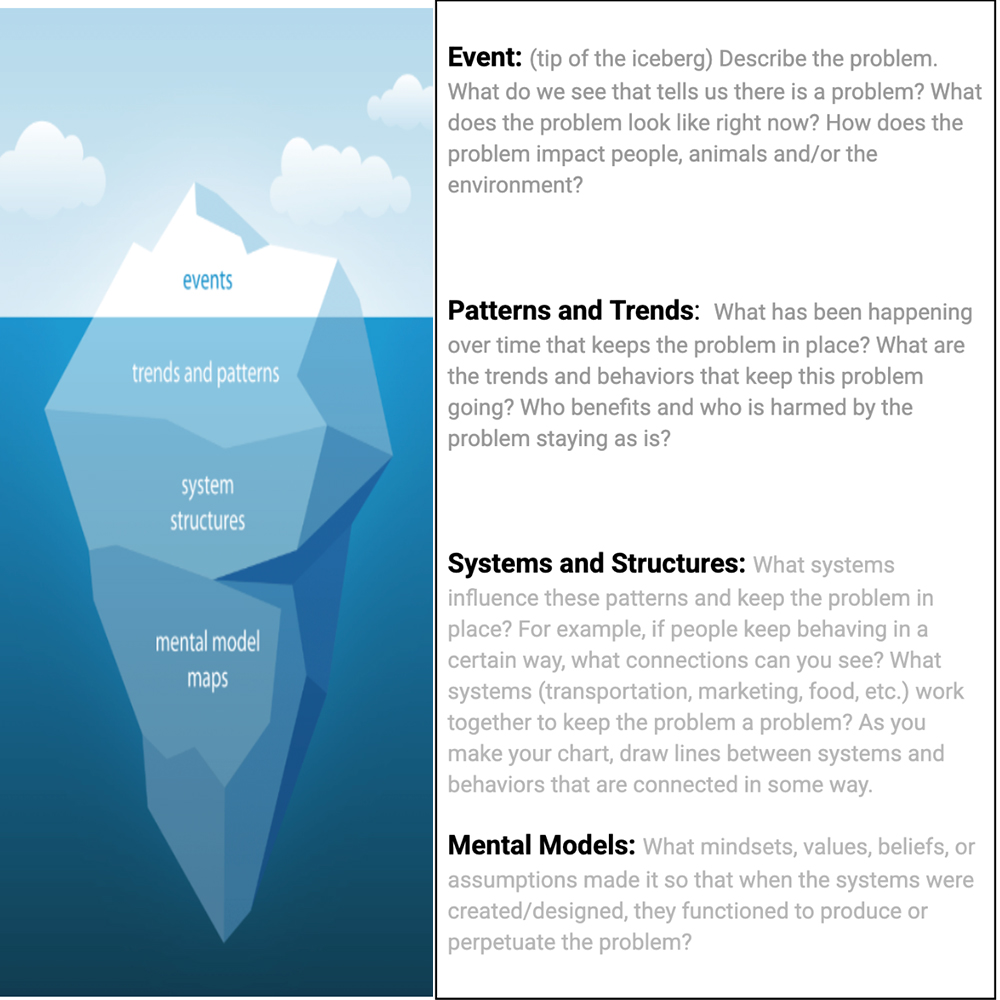
We needed to get into the community and share our ideas. We presented to the Grade 4 classes about our Sustainability Iceberg.
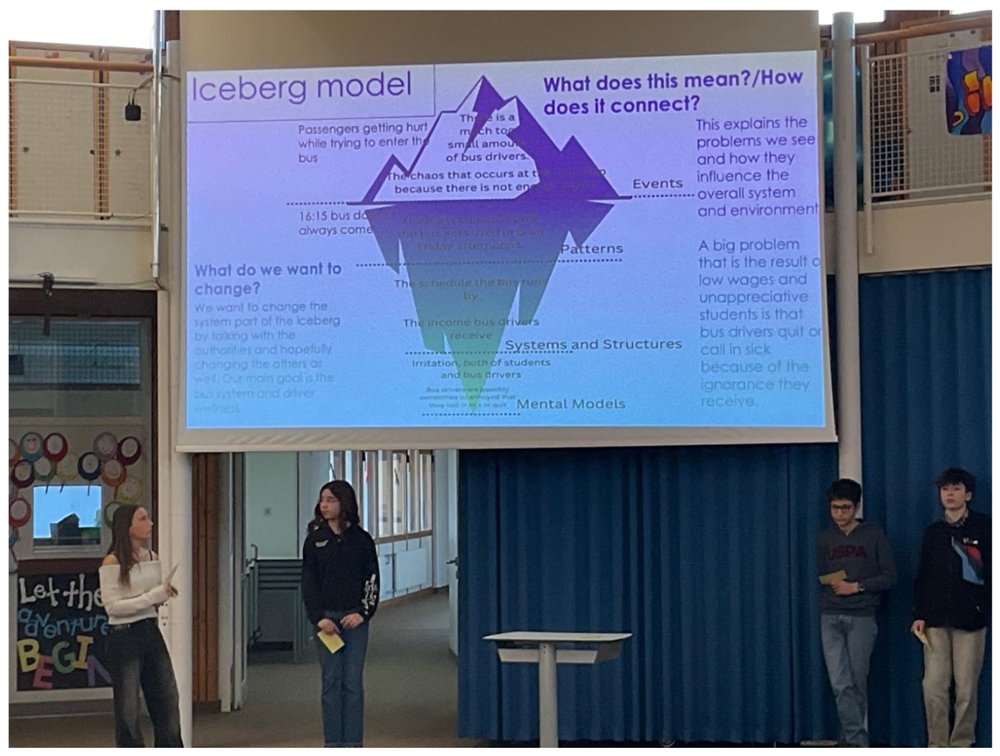
“We also presented to eleven senior school homerooms about the bus safety and behaviors. We felt very proud and acknowledged that we had managed to spread kindness about this topic that we care about.” - Melina
But, changing the mindsets of students was not enough. We needed all stakeholders to be on board with our effort to appreciate bus drivers. And then the idea of BDAD was born: Bus Driver Appreciation Day!
Implementing
In February, we decided to hold a fundraiser so that our day of appreciation (BDAD) would include gifts for the bus drivers that drove through our school.
“I remember buying the roses online and being scared that the Valentines candy-gram idea wouldn't sell well, which would result in not getting money back. While selling the flowers I increasingly grew more confident in our idea. People were lining up to order roses and cookies, until we eventually sold out! After raising around 430 Euros, I was proud of our class.” - Leni
In March, students had the opportunity to present their idea of BDAD and share the systems thinking tools with other students at the third annual Changemakers Conference held at the American International School of Budapest. While the day of appreciation and gift-giving was well-received, we were encouraged to consider how we might make our efforts to show gratitude more lasting and sustainable. For example, if the students could design a sign and get it approved by our school, we could put up a permanent reminder at the bus stop.
Between schedules, emails, gifts, meetings, and notes of appreciation, the months flew by. June 5 was set as the official date for Bus Driver Appreciation Day (BDAD). We were also proud to welcome representatives from Deutsche Bahn, Germany’s national railway company, as well as the Starnberg District Office to join us for the celebration day.
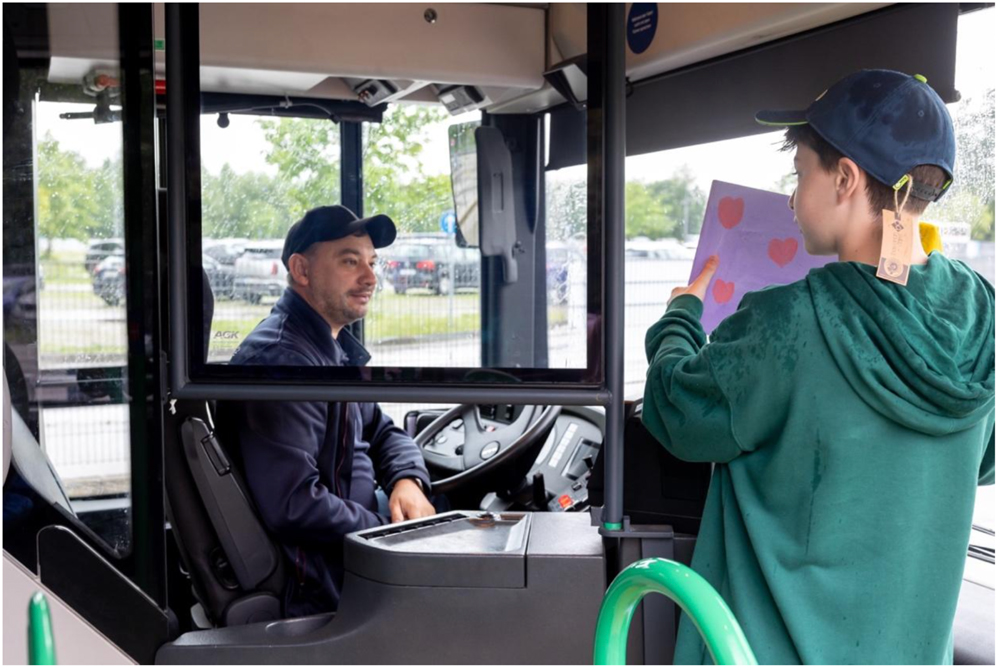
“The best thing about making the cards was seeing how many people wrote personal and sweet messages to the bus drivers.” - Kim
“It was eye-opening to see how that one box of cardboard with a few contents made a driver so happy. There was this one driver who lit up every time he came around and saw us there us, he got a box. Then the other driver who was pleasantly surprised at unexpected kindness. I´m glad we made an impact.” – Charlotte
We learned on BDAD from the district representatives that starting in the new school year 2025-26, a second after school bus would be coming to our school. This was in thanks to our school administration’s lead on collaborating with the Starnberg city-administration. We also received approval from the school marketing team for a permanent Appreciate Bus Drivers sign to go up on the bus stop, and we could already see the behaviors of students at our school becoming more appreciative.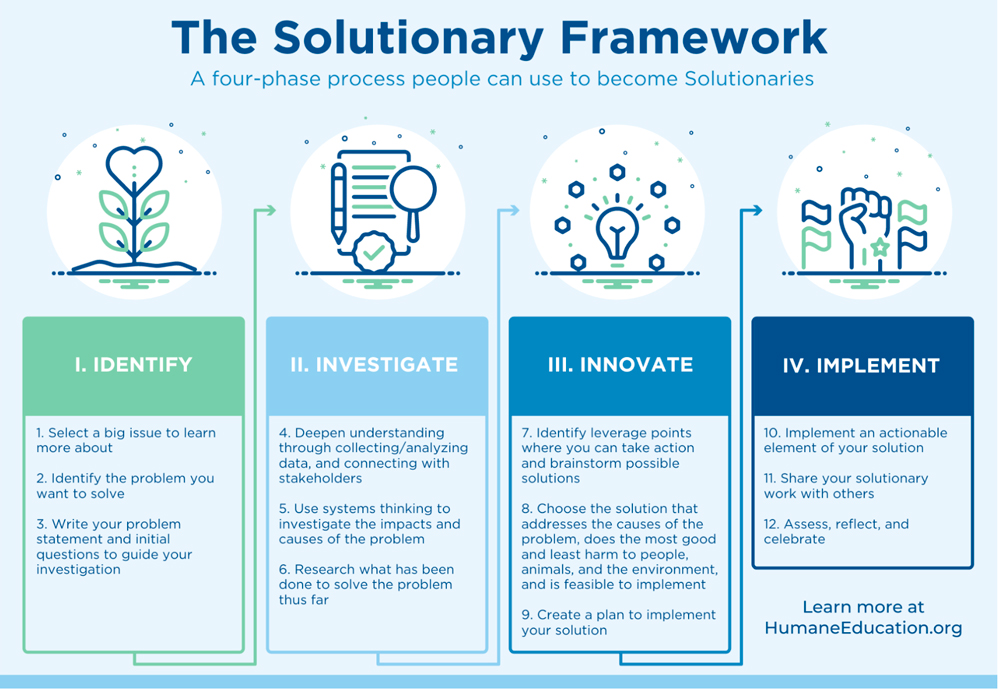
Solutionary Framework. (Photo source: HumaneEducation.org)
The lessons learned from Bus Driver Appreciation Day can be applied to anyone in the service industry and is just one example of how students following the Solutionary Framework, given time and support, can make a positive difference in their community.
“I want the students and administrators to understand that when they see a problem, they should take action!” – Mete
Kathryn T. Berkman currently works at Munich International School. She began her journey as a teacher after graduating from the University of San Francisco, focusing on social justice and multiple intelligences in math education. She has had the opportunity to teach middle schoolers across three countries over the last 13 years. Kathryn is keen to engage in opening the Solutionary lens and framework for educators in different contexts.